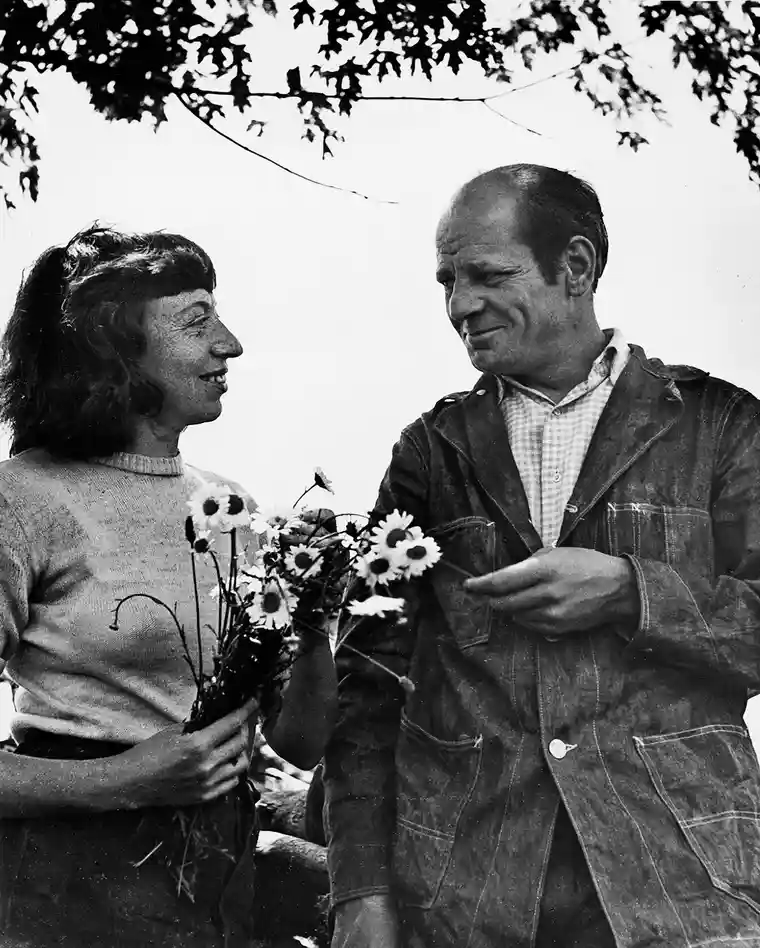Great Abstract Artists | New York School - Abstract Expressionism & Lee Krasner
- Beth Strickland

- Jan 27, 2023
- 5 min read
Continuing to talk about Abstract Artists, you can't go past talking about the New York School - and the Irascibles, the name for a group of painters who participated in the development of contemporary art from the early 1940s in or around New York City. During and after World War II, leadership in avant-garde art shifted from war-torn Europe to New York, and the New York school maintained a dominant position in world art into the 1980s. Abstract Expressionism, the most important art movement to emerge after World War II, Minimal art, Pop art, and new realist styles of the late 1960s, among others, all had their beginnings in New York.
In addition to describing visual artists of the New York avant-garde at mid-century, the New York School also refers to poets, composers, dancers, choreographers, prose writers, and jazz musicians.

Although the work from painters of this era was broadly given the term - Abstract Expressionism, the movement comprised many different painterly styles varying in both technique and quality of expression. Despite this variety, Abstract Expressionist paintings share several broad characteristics. They often use degrees of abstraction; i.e. they depict forms unrealistically or, at the extreme end, forms not drawn from the visible world (nonobjective). They emphasize free, spontaneous, and personal emotional expression, and they exercised considerable freedom of technique and execution to attain this goal.

The early Abstract Expressionists had two notable forerunners: Arshile Gorky, who painted suggestive biomorphic shapes using a free, delicately linear, and liquid paint application; and Hans Hofmann, who used dynamic and strongly textured brushwork in abstract but conventionally composed works.

Some of the big names to come out of the 1940s and 1950s in Abstract Expressionism include Jackson Pollock, Willem de Kooning, Franz Kline, and Mark Rothko.

Others included Joan Mitchell, Clyfford Still, Philip Guston, Helen Frankenthaler, Barnett Newman, Adolph Gottlieb, Robert Motherwell, Lee Krasner, Bradley Walker Tomlin, William Baziotes, Ad Reinhardt, Richard Pousette-Dart, Elaine de Kooning, and Jack Tworkov. Most of these artists worked, lived, or exhibited in New York City.
It was definitely a man's world in the 40s and 50s and in the beginning, the men's artwork was shown in galleries - notably the private gallery of Peggy Guggenheim, called Art of This Century - and the women took a back seat. If you're interested in a really great book about the females from this era - try Ninth Street Women by Mary Gabriel.
Lee (Leonora) Krasner 1908 -1984
A good example of a female artist from this time is Lee Krasner, who didn't the recognition she deserved until much later in her life. Her contribution to abstract expressionism was overshadowed for years by the work of her husband, Jackson Pollock. Their relationship was fierier and more dramatic as Jackson's alcoholism worsened - and I'm going to focus on her work for the rest of this blog.
Thanks to the following information from MOMA

Lee Krasner was a force of nature, always pushing abstraction forward. Her work over 50 years suggests perpetual, restless reinvention, encompassing portraits, Cubist drawings, collage, assemblage, and large-scale abstract painting. A pioneer of Abstract Expressionism, she was also one of the key crusaders for Jackson Pollock’s legacy. As the art historian Helen Harrison, now the director of the Pollock-Krasner House in Springs, NY, once wrote, Krasner “squeezed the juice out of her imagery.”
Krasner was born in 1908, to Russian-Jewish refugees in Brooklyn. She always wanted to study and make art and attended the Women’s Art School at Cooper Union and the National Academy of Design. When The Museum of Modern Art opened in 1929, Krasner said, “It was like a bomb that exploded…nothing else ever hit me that hard, until I saw Pollock’s work.”
She became a mural painter for the Works Progress Administration, the Depression-era public art project, and an arts activist. In 1937, she studied with the influential teacher and artist Hans Hofmann and joined the American Abstract Artists group; she went dancing to jazz with Piet Mondrian. In many ways, she was at the center of the burgeoning New York art world. As one dealer remarked, Krasner “knew more about painting than anyone in the United States, except John Graham.”

It was the artist Graham who brought Krasner and Jackson Pollock together. In 1942, both were included in his major exhibition French and American Painting at an antique furniture store in midtown New York. Krasner was inspired to knock on Pollock’s apartment door to check out his work. It was the start of a tempestuous relationship that would be a central and at times eclipsing presence in her own career.
Krasner introduced Pollock to many artists and gallerists, including Willem de Kooning, Hans Hoffman, and Sidney Janis, and most importantly to the art critic Clement Greenberg, who became a champion of Pollock’s work.



In 1945, Krasner and Pollock married and moved out to Springs, East Hampton, on the East End of Long Island, to get away from the city scene. (Pollock was already suffering from debilitating alcoholism.) There they gathered clams, rode bikes, and painted. Krasner, working in her upstairs bedroom studio, began her breakthrough Little Images series—its canvases small enough to fit on a bedside table. These intimate paintings, rich in surface texture, often loosely structured in a grid yet full of energy and improvisation. She imagined the dense compositions of her Little Images as unreadable hieroglyphics, thick with paint sometimes applied directly from the tube. Krasner also began working on collages—using paper and scraps from canvases she and Pollock had discarded—that demonstrated her admiration for Henri Matisse. Lee also made mosiac tabletops.
These intimate paintings, rich in surface texture, often loosely structured in a grid yet full of energy and improvisation. She imagined the dense compositions of her Little Images as unreadable hieroglyphics, thick with paint sometimes applied directly from the tube. Krasner also began working on collages—using paper and scraps from canvases she and Pollock had discarded—that demonstrated her admiration for Henri Matisse. Lee also made mosiac tabletops.
Little Images 1946 -1950

In 1956, while Krasner was in Europe, Pollock died in a car crash. By then, they were estranged. Pollock, the angry alcoholic, was having an affair. A year later, Krasner moved into the barn studio that Pollock had used on their property, and the scale and energy of her paintings expanded. Nature became an immersive theme: The Seasons (1957) stretched 17 feet wide, and Gaea (1966), after the Greek earth goddess, shows her moving toward broad swaths of color and rhythm. In 1965, she had her first solo exhibition at Whitechapel Gallery in London, and in 1975, at the Whitney Museum of American Art. She died in 1984, just a few months before her retrospective opened at MoMA.































Comments